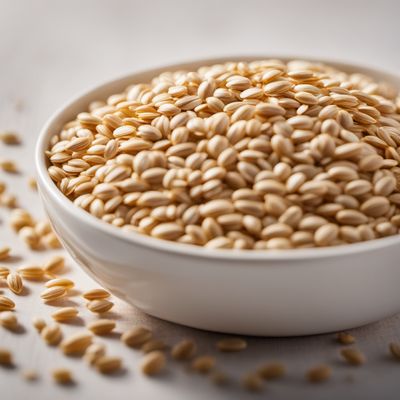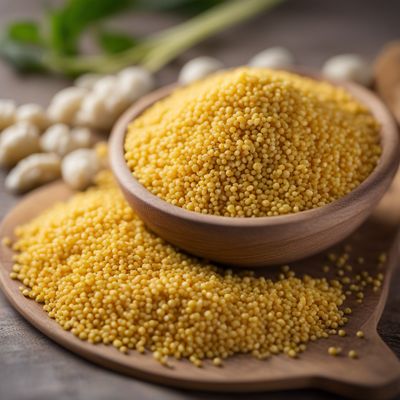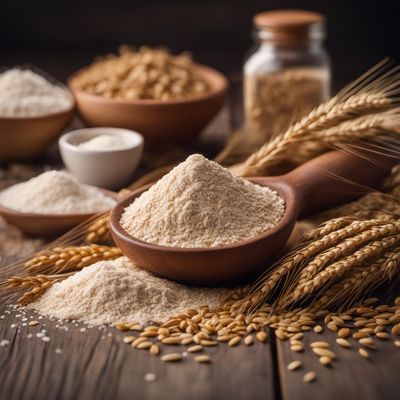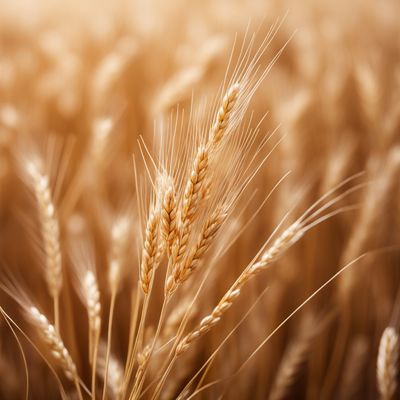
Ingredient
Cereal and cereal-like flours not separately listed
The Flour Power: Unleashing the Versatility of Cereal and Cereal-Like Flours
Cereal and cereal-like flours, derived from grains such as wheat, corn, rice, oats, and barley, are finely ground powders that serve as the backbone of many recipes. These flours possess distinct characteristics, with wheat flour being the most common and versatile. Wheat flour, known for its gluten content, provides structure and elasticity to baked goods, while corn flour imparts a delicate sweetness and smoothness. Rice flour, on the other hand, lends a light and airy texture, making it ideal for gluten-free recipes. Oat flour adds a nutty flavor and a moist crumb, while barley flour offers a rich, earthy taste. These flours can be used individually or combined to create a myriad of dishes, from bread and pastries to pancakes and noodles.
Origins and history
The use of cereal and cereal-like flours dates back thousands of years, with wheat being one of the earliest cultivated grains. Ancient civilizations, such as the Egyptians, Greeks, and Romans, relied heavily on wheat flour for their staple foods. Corn flour, a staple in Native American cuisine, has been a vital ingredient in the Americas for centuries. Rice flour has been a staple in Asian cuisines, particularly in countries like Japan, China, and Thailand. Oat flour gained popularity in Europe during the Middle Ages, while barley flour has been used in various cultures throughout history. These flours have played a significant role in shaping culinary traditions and continue to be essential ingredients in global cuisines.
Nutritional information
Cereal and cereal-like flours are rich sources of carbohydrates, providing energy for the body. They also contain varying amounts of protein, fiber, vitamins, and minerals, depending on the specific grain used. These flours are often fortified with additional nutrients, such as iron and B vitamins, to enhance their nutritional value.
Allergens
Wheat flour, a common cereal flour, contains gluten and may trigger allergies or intolerances in individuals with celiac disease or gluten sensitivity. It is important to note that cross-contamination can occur in facilities that process multiple grains, so individuals with severe allergies should exercise caution.
How to select
When selecting cereal and cereal-like flours, opt for those that are labeled as "whole grain" or "100% whole wheat" to ensure maximum nutritional benefits. Look for flours that are finely ground and have a consistent texture. Check the expiration date to ensure freshness, and consider purchasing from reputable brands or local mills for quality assurance.
Storage recommendations
To maintain the freshness and quality of cereal and cereal-like flours, store them in airtight containers in a cool, dark pantry or refrigerator. This helps to prevent moisture absorption and prolongs their shelf life. Whole grain flours have a shorter shelf life due to their higher oil content, so it is advisable to use them within a few months or store them in the freezer for longer-term storage.
How to produce
Amateur bakers can produce cereal and cereal-like flours by grinding whole grains in a high-powered blender or a grain mill. Start by thoroughly cleaning the grains and removing any debris. Grind the grains in small batches until they reach the desired consistency, and sift the flour to remove any larger particles. Store the homemade flour in an airtight container in a cool, dry place.
Preparation tips
Cereal and cereal-like flours can be used in a multitude of recipes, including bread, cakes, cookies, pancakes, and more. When using wheat flour, consider the gluten content and adjust the liquid and leavening agents accordingly. For gluten-free recipes, combine rice flour with other gluten-free flours for better texture and structure. Oat flour can be used as a substitute for wheat flour in many recipes, adding a delightful nutty flavor. Experiment with different combinations of these flours to achieve the desired taste and texture in your culinary creations.
Substitutions
Wheat flour can be substituted with gluten-free flours like rice flour, almond flour, or a gluten-free flour blend for those with gluten sensitivities. Corn flour can be replaced with cornmeal or masa harina, while rice flour can be substituted with potato starch or tapioca flour in gluten-free recipes. Barley flour can be substituted with whole wheat flour or oat flour, and oat flour can be replaced with almond flour or coconut flour for a gluten-free option.
Culinary uses
Cereal and cereal-like flours are incredibly versatile and find their way into a wide range of culinary creations. Wheat flour is the go-to choice for baking bread, cakes, cookies, and pastries. Corn flour is commonly used in tortillas, cornbread, and batters for frying. Rice flour is a staple in Asian cuisine, used for making noodles, dumplings, and desserts. Oat flour is perfect for adding a nutty flavor to pancakes, muffins, and cookies. Barley flour is often used in bread, pancakes, and porridge, adding a distinct earthy taste.
Availability
Cereal and cereal-like flours are widely available in grocery stores, supermarkets, and specialty food stores worldwide. They can also be purchased online, ensuring accessibility to home cooks and professional chefs alike.
More ingredients from this category » Browse all

Barley flour
The Nutritional Powerhouse: Barley Flour

Buckwheat flour
The Nutty Powerhouse: Buckwheat Flour

Millet flour
The Ancient Grain: Millet Flour

Flour mix (like wheat/rye/barley/oats and other)
Versatile Blend for Every Recipe

Maize, milled
Golden Grain: Unleashing the Power of Milled Maize

Spelt flour
The Ancient Grain of Spelt

Wheat flour
The Versatile Grain: Exploring the Wonders of Wheat Flour

Amaranth flour
The Ancient Grain Flour with a Nutty Twist

Rice flour
The Versatile Grain Powder

Rye flour
Hearty Grain

Sorghum flour
Sorghum Flour: A Nutritious and Gluten-Free Alternative

Oat flour
The Wholesome Power of Oat Flour